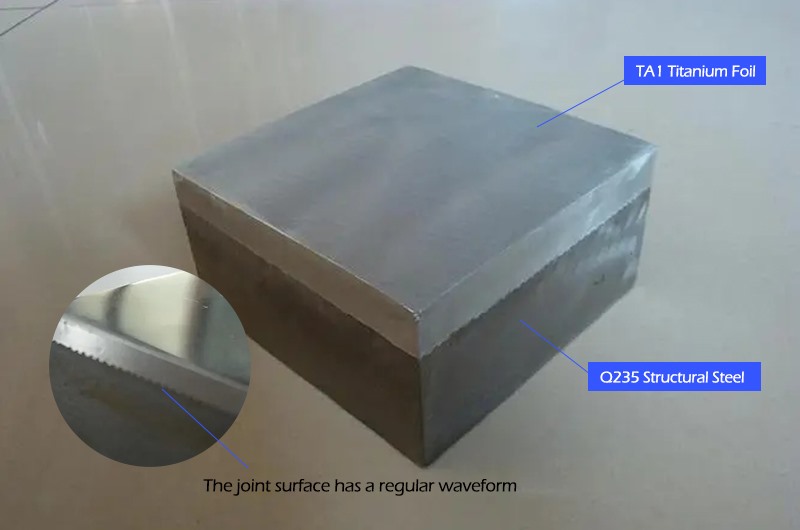As a solid-solid connection method, explosive welding can obtain better bonding quality and is an important welding technology for metal composite materials. The interface changes from a straight bond to a wavy bond. The microhardness increases accordingly, and the metal near the interface has the highest microhardness. The composite plate has excellent corrosion resistance in a corrosive environment.
In order to reduce the amount of rare metal titanium used in explosive welded clad plates, Chalco Aluminum uses Q235 steel and TA1 titanium foil as the base/clad layer, low-explosive emulsion explosive as the welding explosive, and salt as the pressure transfer medium between the explosive and the foil. Research on explosive welding of titanium foil/steel was carried out. The explosive welding of 200 μm titanium foil and steel was realized by using salt as the pressure transfer layer. The titanium foil with a thickness of 0.2 mm was used to replace the titanium plate to solve the problem of high cost of composite plate materials.

TA1 titanium foil and Q235 structural steel were used as the cladding layer and the base layer, respectively, with a size of 200 mm × 100 mm × (0.2 + 15) mm, the emulsified matrix was used as the matrix, and the hollow glass microspheres were used as sensitizers and diluents to prepare microspheres A low-explosive emulsion explosive with a content of 20%, the explosive density is 685 kg/m3, and the explosion velocity is 3 148 m/s. The aluminum honeycomb plate is used as the explosive charge frame, and the emulsion explosive is filled in the pores of the honeycomb plate to prepare a honeycomb structure explosive with a thickness of 12 mm. Aluminum The honeycomb panel has good compression resistance, which can ensure the uniform thickness of explosives everywhere. A layer of salt with a thickness of 5 mm is placed on the surface of the compound plate as a pressure transfer layer. The salt crystals gasify under the action of high temperature, protecting the titanium foil from high temperature burns with reduced shock load damage.
The welding surfaces of titanium foil and steel plate are ground and polished, assembled in sequence and placed on the explosion tank. The explosion welding device adopts a parallel installation structure. LEICA DM4 M metallographic microscope and FlexSEM 1000 scanning electron microscope are used to analyze the titanium/steel after explosion welding. The microscopic morphology of the composite plate was observed. The titanium/steel composite plate sample was cut along the direction parallel to the detonation wave, and after grinding and polishing, Keller reagent (3 mL HF + 6 mL HNO3 + 91 mL H2O) was used for corrosion.
In order to explore the mechanical properties of the titanium/steel composite plate, tensile and three-point bending tests were performed on tensile and bending specimens, respectively, to characterize the bonding strength of the interface of the titanium/steel composite material under tensile failure and the plastic deformation under bending load. Capability. In both bending and tensile tests, the thickness of the specimen is 2 mm, of which the titanium layer is 200 μm and the steel layer is 1.8 mm.
(1) The junction surface of TA1 Q235 explosive welded clad plates has a regular waveform, the average wavelength of the interface waveform is 100 μm, the amplitude is 30 μm, no holes, cracks and other defects are observed, and the welding quality is good.
(2) The surface of the TA1 Q235 explosive welded clad plate is mainly combined in the form of a molten layer. The main component of the molten layer is Ti and contains a small amount of Fe elements. The vortex behind the interface wave contains a molten block. According to the atomic ratio, it is mainly composed of FeTi, Fe2Ti and other intermetallic compounds.
(3) The inner and outer bending specimens of TA1 Q235 clad plates are not delaminated, and the composite plate has good cold working bending properties; there are dimples of different sizes in the tensile fracture of the titanium layer and the steel layer, and the section of the tensile specimen is Mainly ductile fracture.











